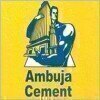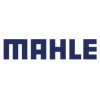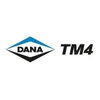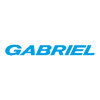Junior Engineer 1
40+ Junior Engineer 1 Interview Questions and Answers

Asked in Asteria Aerospace

Q. How any types of communications are there in electronics. What is CAN and I2C communication.
There are two main types of communications in electronics: CAN (Controller Area Network) and I2C (Inter-Integrated Circuit).
CAN (Controller Area Network) is a robust serial communication protocol commonly used in automotive and industrial applications.
I2C (Inter-Integrated Circuit) is a multi-master, multi-slave serial communication protocol used for connecting low-speed peripherals.
CAN communication allows for high-speed communication between devices over a network, while I2...read more

Asked in Asteria Aerospace

Q. On a scale of 1 to 5, how would you rate your harness design skills?
I would rate myself a 4 out of 5 in harness design.
I have experience designing harnesses for various projects during my studies and internships.
I have a good understanding of the principles and best practices in harness design.
I have received positive feedback on my harness designs from supervisors and colleagues.
I am always looking to improve my skills and stay updated on the latest developments in harness design.
Junior Engineer 1 Interview Questions and Answers for Freshers

Asked in Asteria Aerospace

Q. Which IPC standard should be followed for wire-to-wire soldering?
IPC-A-610 is the standard to follow for wire to wire soldering.
IPC-A-610 is the Acceptability of Electronic Assemblies standard
It provides guidelines for soldering and other assembly processes
Examples of criteria include acceptable solder joint size and shape

Asked in Hospet Steels

Q. What is the alloy steel industry what are the process steps down there
The alloy steel industry is a sector that produces steel with specific properties by adding alloying elements.
Alloy steel industry produces steel with enhanced properties by adding alloying elements like chromium, nickel, or molybdenum.
The process steps in the alloy steel industry include melting, refining, casting, and heat treatment.
Melting involves heating the raw materials, including iron ore and alloying elements, in a furnace.
Refining removes impurities from the molten ...read more

Asked in Tata Steel

Q. Type of coupling ? Why they are used ? Specifications ?
Couplings are mechanical devices used to connect two shafts together for transmitting power.
Types of couplings include rigid, flexible, fluid, and magnetic couplings
Couplings are used to transmit power from one shaft to another while allowing for misalignment
Specifications for couplings include torque capacity, speed rating, and misalignment tolerance

Asked in Asteria Aerospace

Q. Which tools are you familiar with for harness drawing?
One tool for harness drawing is AutoCAD Electrical.
AutoCAD Electrical is a software tool specifically designed for creating electrical control systems, including harness drawings.
It allows users to easily generate and update wire harness drawings, with features such as automatic wire numbering and component tagging.
Other tools for harness drawing include SolidWorks Electrical and Zuken E3.series.
Junior Engineer 1 Jobs


Asked in Asteria Aerospace

Q. Which is better, soldering or crimping, and why?
Soldering is better for permanent connections, while crimping is better for temporary or removable connections.
Soldering provides a stronger and more reliable connection compared to crimping.
Soldering is better for applications where the connection needs to withstand high temperatures or vibrations.
Crimping is quicker and easier for temporary connections or when frequent disconnections are needed.
Crimping is often used in automotive wiring harnesses or computer cables.
Both so...read more
Asked in Kasturi Housing

Q. How do you perform rate analysis and what percentages do you consider?
Rate analysis is done by breaking down the cost of a project into various components and calculating the cost of each component as a percentage of the total cost.
Identify the various components of the project
Determine the cost of each component
Calculate the percentage of each component in relation to the total cost
Add up the percentages to ensure they equal 100%
Use the rate analysis to estimate the cost of future projects
Share interview questions and help millions of jobseekers 🌟


Asked in Statcon Power Controls

Q. What is a MOSFET and what are its working principles?
MOSFET is a type of transistor used for amplification and switching of electronic signals.
MOSFET stands for Metal-Oxide-Semiconductor Field-Effect Transistor.
It has three terminals - source, gate, and drain.
The gate terminal controls the flow of current between the source and drain terminals.
MOSFETs are widely used in electronic devices such as computers, mobile phones, and power amplifiers.
They are preferred over other types of transistors due to their high input impedance, ...read more

Asked in Asteria Aerospace

Q. How do you add a watermark in Excel?
In Excel, you can add a watermark by inserting a text or image behind the content of the spreadsheet.
Go to the 'Page Layout' tab in Excel.
Click on 'Watermark' in the 'Page Background' group.
Select either 'Custom Watermark' to add a text watermark or 'Picture Watermark' to add an image watermark.
Choose the desired text or image for the watermark.
Adjust the size, transparency, and position of the watermark as needed.

Asked in Asteria Aerospace

Q. What do you know about harness drawings?
Harness drawing is a detailed diagram or schematic representation of an electrical wiring harness.
Harness drawing shows the layout and connections of wires, cables, and connectors in a system.
It helps in understanding the routing of wires and the overall design of the electrical system.
Harness drawings are commonly used in automotive, aerospace, and industrial applications.
They are essential for troubleshooting, maintenance, and assembly of electrical systems.
Asked in Nuron Networks

Q. What is your knowledge of Computer Networks?
I have a strong knowledge of computer networks including concepts like TCP/IP, routing, switching, and network security.
Familiar with TCP/IP protocol suite
Understanding of network routing and switching
Knowledge of network security principles
Experience with configuring and troubleshooting network devices
Awareness of different network topologies and protocols

Asked in Badri Rai and Company

Q. What are the procedures for installing a pile?
Installation of a pile involves several procedures that must be followed carefully.
Site preparation and marking
Excavation of soil to the required depth
Insertion of pile into the hole
Pouring of concrete or grout into the hole
Curing of the concrete or grout
Cutting the pile to the required level
Testing the pile for load-bearing capacity

Asked in Dipty Lal Judge Mal

Q. What is abs and what is pre heating temp.
ABS is a thermoplastic polymer and preheating temp is the temperature at which a material is heated before welding or machining.
ABS stands for Acrylonitrile Butadiene Styrene, a common thermoplastic polymer used in various applications.
Preheating temperature is the temperature at which a material is heated before welding or machining to prevent cracking or distortion.
Preheating temperature varies depending on the material being used and the welding or machining process.
For ex...read more

Asked in Ambuja Cements

Q. How do you handle manpower?
Effective manpower management involves clear communication, motivation, and conflict resolution to enhance team productivity.
Establish clear roles and responsibilities to avoid confusion. For example, assign specific tasks based on individual strengths.
Encourage open communication to foster a collaborative environment. Regular team meetings can help address concerns and share ideas.
Implement motivational strategies such as recognition programs to boost morale. For instance, c...read more

Asked in MAHLE ANAND Filter Systems

Q. What is engine How many types of engine Working of engine And then last work experience.
An engine is a machine that converts fuel into mechanical energy. There are two main types of engines: internal combustion engines and external combustion engines.
Internal combustion engines burn fuel inside the engine, such as gasoline engines in cars.
External combustion engines burn fuel outside the engine, such as steam engines.
Engines work by converting the chemical energy in fuel into mechanical energy through combustion.
The mechanical energy produced by the engine is us...read more

Asked in Dana TM4

Q. What is the working principle of a motor?
The working principle of a motor involves converting electrical energy into mechanical energy through electromagnetic induction.
Motors operate based on the principle of electromagnetic induction, where a current-carrying conductor in a magnetic field experiences a force.
This force causes the conductor to move, resulting in mechanical motion.
Different types of motors, such as DC motors, AC motors, and stepper motors, have variations in their working principles and construction...read more

Asked in Gabriel India Limited

Q. What is TPM TQM, KAIZEN, LINE BALANCING
TPM, TQM, KAIZEN, and line balancing are all methodologies used in manufacturing to improve efficiency and quality.
TPM (Total Productive Maintenance) is a system for maintaining and improving equipment and processes to prevent breakdowns and defects.
TQM (Total Quality Management) is a management approach that focuses on continuous improvement of quality and customer satisfaction.
KAIZEN is a Japanese term meaning 'continuous improvement' and refers to a philosophy and methodol...read more

Asked in Wistron

Q. What was your initial approach to solving the problem?
Identifying the root cause of a problem involves systematic analysis and understanding of underlying issues.
Define the problem clearly: Understand what the issue is and its impact.
Gather data: Collect relevant information and evidence related to the problem.
Analyze the data: Look for patterns or trends that may indicate the cause.
Identify potential causes: Brainstorm possible reasons for the problem.
Test solutions: Implement changes to see if they resolve the issue.

Asked in Asteria Aerospace

Q. How do you select a connector?
Connectors are selected based on factors like compatibility, durability, cost, and ease of use.
Consider the type of devices being connected and the required signal or power transmission.
Check for compatibility in terms of size, shape, and electrical specifications.
Evaluate the durability of the connector for the intended application.
Compare costs of different connectors while ensuring quality.
Ease of use and installation should also be taken into account.
Examples: USB connect...read more

Asked in Leadec India

Q. What is the working principle of VFD?
VFD stands for Variable Frequency Drive, which controls the speed of an AC motor by varying the frequency and voltage of the power supplied to it.
VFD converts fixed frequency AC power to variable frequency to control motor speed
It adjusts the voltage and frequency to match the motor's speed requirements
VFDs are commonly used in HVAC systems, pumps, conveyors, and other industrial applications

Asked in SRF

Q. Explain the different types of control valves.
Control valves are used to regulate the flow, pressure, temperature, and level of fluids in a process system.
There are several types of control valves including globe valves, butterfly valves, ball valves, and diaphragm valves.
Globe valves are commonly used for regulating flow, while butterfly valves are often used for on/off control.
Ball valves are suitable for quick shut-off applications, and diaphragm valves are ideal for controlling corrosive fluids.
Control valves can be ...read more

Asked in PES Engineers

Q. Can you perform daily maintenance of machines and equipment?
Yes, I can perform daily maintenance of machines and equipment to ensure optimal performance and longevity.
Conduct regular inspections to identify wear and tear, such as checking for leaks in hydraulic systems.
Lubricate moving parts to reduce friction and prevent overheating, like greasing bearings in motors.
Calibrate machines to ensure they operate within specified parameters, for example, adjusting the settings on CNC machines.
Replace worn-out components promptly, such as c...read more

Asked in Tenneco

Q. What is the function of a shock absorber?
Shock absorbers are devices that help to absorb and dampen the shock impulses generated by the suspension system of a vehicle.
They help to improve the ride comfort and handling of a vehicle by reducing the impact of bumps and vibrations on the chassis.
They also help to maintain tire contact with the road surface, which improves traction and stability.
Shock absorbers work by converting the kinetic energy of the suspension movement into heat energy, which is dissipated through ...read more


Q. What are the key differences between analog and digital communication?
Analog communication transmits continuous signals, while digital communication uses discrete signals for data transmission.
Analog communication uses continuous signals, e.g., AM/FM radio.
Digital communication uses discrete signals, e.g., digital audio files.
Analog signals can degrade over distance, while digital signals maintain quality.
Analog systems are more susceptible to noise; digital systems can use error correction.
Examples of analog: vinyl records, traditional telepho...read more

Asked in Asteria Aerospace

Q. How do you select a wire?
Wire selection is based on factors like current rating, insulation material, and environmental conditions.
Consider the current rating of the wire to ensure it can handle the load.
Choose the appropriate insulation material based on the application (e.g. PVC, Teflon).
Take into account environmental conditions like temperature and moisture resistance.
Refer to wire gauge charts to determine the right size for the current rating.
Consult with colleagues or experts for guidance on s...read more

Asked in India Japan Lighting

Q. How many any types of plastic materials
There are numerous types of plastic materials, each with unique properties and applications across various industries.
Polyethylene (PE): Commonly used for plastic bags and bottles due to its flexibility and durability.
Polypropylene (PP): Known for its resistance to heat and chemicals, often used in automotive parts and food containers.
Polyvinyl Chloride (PVC): Widely used in construction for pipes and fittings due to its strength and resistance to environmental degradation.
Po...read more
Asked in Sunidhi Securities & Finance

Q. Where do you see yourself in 5 years?
In five years, I envision myself as a skilled engineer, leading projects and contributing to innovative solutions in my field.
I aim to take on leadership roles, guiding junior engineers and fostering a collaborative team environment.
I plan to enhance my technical skills by pursuing relevant certifications and attending workshops.
I aspire to work on impactful projects that improve efficiency and sustainability in engineering practices.
I hope to build a strong professional netw...read more

Asked in Foxlink India Electric

Q. What is UPH and how do you calculate it?
UPH stands for Units Per Hour and is a measure of productivity in manufacturing.
UPH is calculated by dividing the total number of units produced by the total number of hours worked.
For example, if a factory produces 500 units in 10 hours, the UPH would be 50 (500 units / 10 hours).

Asked in Statcon Power Controls

Q. QUASTION IN RESISTANCE AND COLOR CODING
Resistance is the opposition to the flow of electric current. Color coding is used to identify the resistance value of a resistor.
Resistors are used to limit the flow of current in a circuit.
The resistance value of a resistor is measured in ohms (Ω).
Color coding is used to identify the resistance value of a resistor.
The color bands on a resistor represent the significant digits, multiplier, and tolerance of the resistor.
For example, a resistor with color bands brown, black, r...read more
Interview Questions of Similar Designations
Interview Experiences of Popular Companies








Reviews
Interviews
Salaries
Users

















